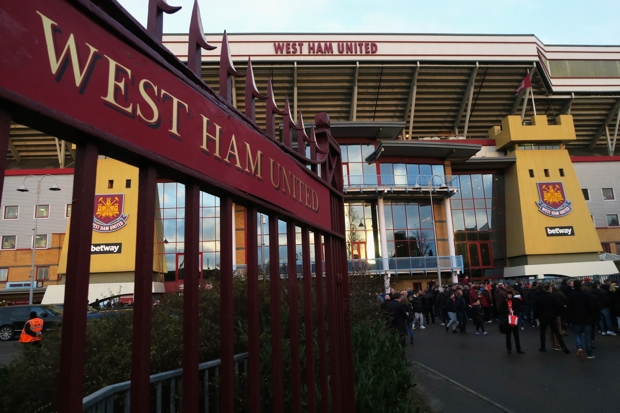The Boleyn Ground, commonly known as Upton Park, has been home to West Ham United since 1904. It stands on Green Street, a road in London that bisects the parishes of East and West Ham. With its slightly tacky fortress-inspired design, it has become a symbol of East London’s resilience against the tide of gentrification and development.
Until this summer, that is. West Ham will today play their final match at the Boleyn Ground, because the stadium is due to be bulldozed in order to make way for a trendy block of flats. Developers are busy drawing up plans for the property, which they purchased in February 2014. Their original designs – which were rejected due to a lack of affordable social housing – looked like something out of J.G. Ballard’s imagination. Fifteen storey towers topped with grass (a small concession to the area’s footballing heritage) and a vast zigzagging courtyard for residents to stroll around without actually having to venture into the East End.
And what of West Ham United? From the start of the 2016/17 season, they will now play their home games at the Olympic Stadium in Stratford. This stadium, designed to be an emblem of national pride for the 21st century, has spent the past four years languishing as a white elephant alongside the world’s most expensive helter-skelter.
Parts of the Queen Elizabeth Olympic Park are in Newham, but the site is a far cry from the cluttered, urban feel of the Boleyn Ground. With its sanitised grandeur, the Olympic Stadium doesn’t resemble West Ham as the world knows it. If anything, the new stadium resembles a corporate vision of football. It’s small wonder that West Ham’s move there has been so controversial. Plenty of people have also complained that West Ham fans are getting too much for free, by taking possession of a stadium built with taxpayers’ money.
But should West Ham fans – of which I am one – feel disheartened by all this? I don’t think so. A football club is not defined by its surroundings, although in this era of corporate sponsorship and television rights, it’s easy to forget that. Nor are clubs defined by the thousands of people in this country who make their livings directly out of them. No, clubs are defined by the millions of people who put money, time and attention into the enterprise. They invest in the idea of the club, not the actuality of it.
Stadia come and go, just like players and managers and fans. West Ham will leave an imprint on the Boleyn Ground, but once it is demolished and the developers start refashioning the land as a ritzy E13 settlement (while selling its footballing history to its new yuppy residents) that will quickly evaporate. Who remembers where Maine Road was? How about the Dell? Vetch Field? But fortunately a football club isn’t a physical thing. Whether playing at Boleyn Ground or the Olympic Stadium, the idea of West Ham will remain the same.







Comments